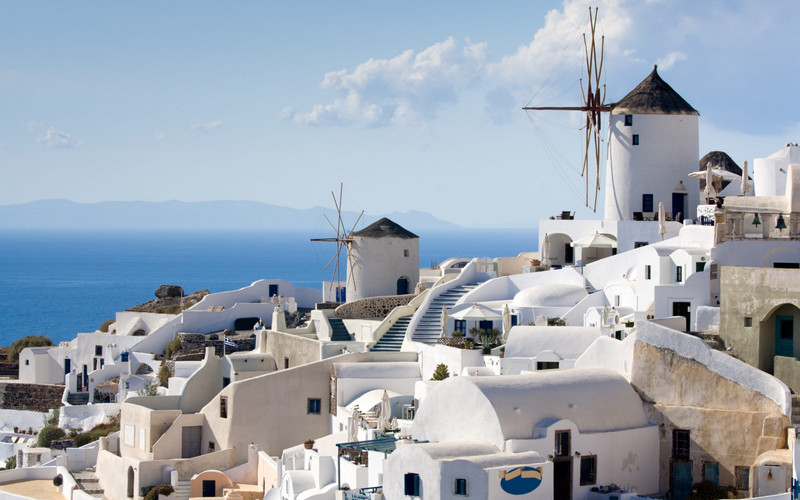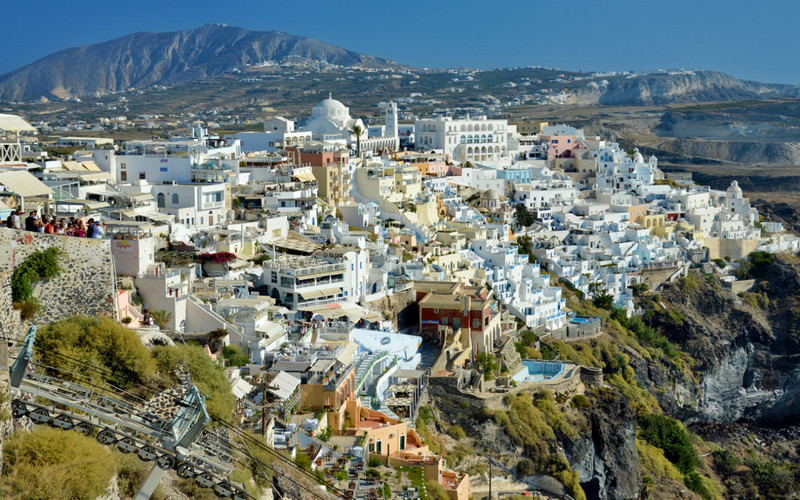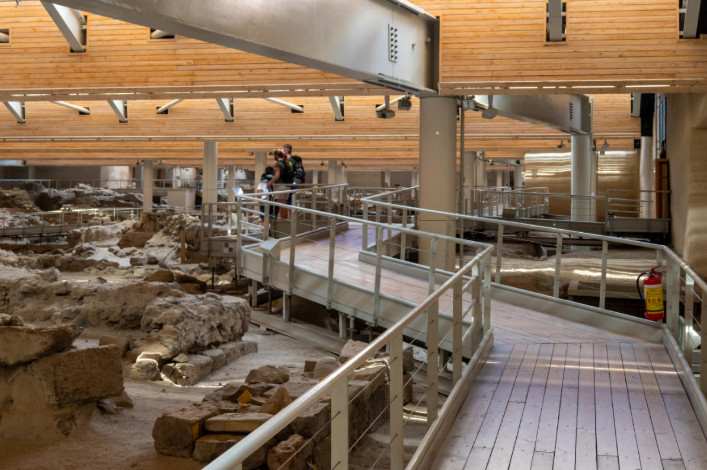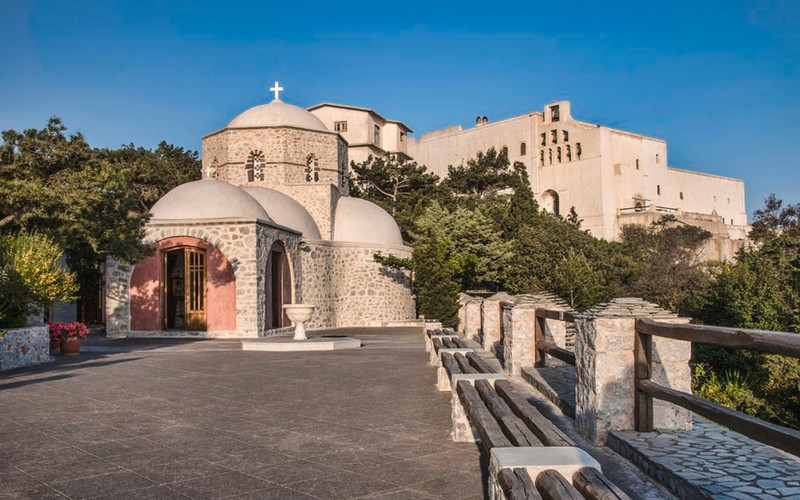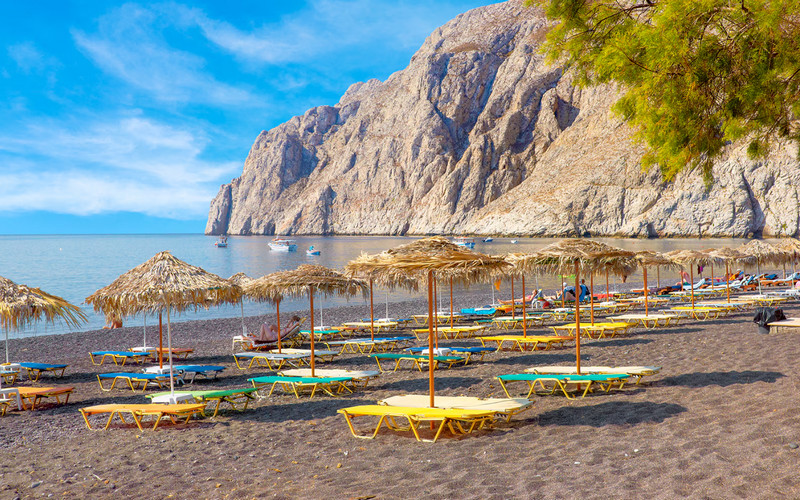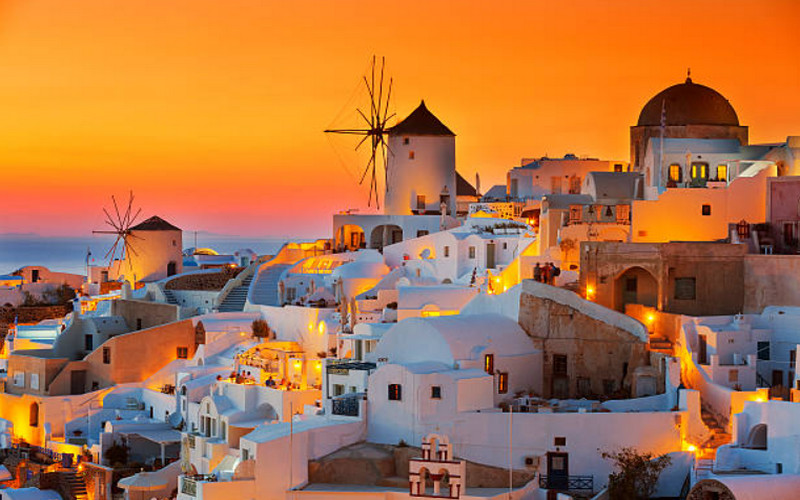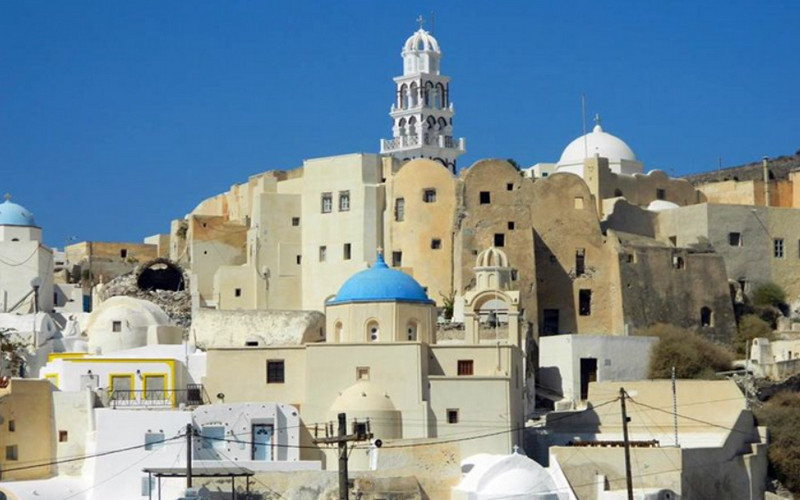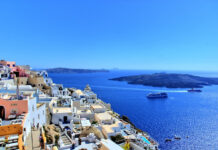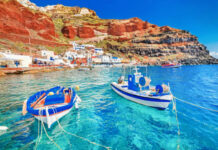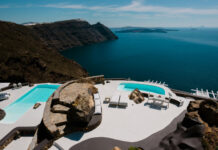Santorini, with its breathtaking caldera views, sun-drenched architecture, and whitewashed villages spilling down volcanic cliffs, is one of the most photographed destinations in the world. At the heart of this Greek island’s postcard perfection are its famous blue domes, particularly those perched in the charming village of Oia. But there’s more to Santorini than these azure-topped churches—far more.
This guide will show you not only how to find and photograph Santorini’s iconic blue domes, but also how to explore the island’s other standout landmarks, from ancient ruins and volcanic beaches to majestic sunset viewpoints and historic castles. Whether you’re a first-time visitor or returning to soak in more of the island’s beauty, this in-depth article will help you uncover the soul of Santorini.
The Famous Blue Domes of Santorini: Where, How, and When to Visit
Where Are the Blue Domes?
The most famous blue domes are located in Oia, the picturesque village on the island’s northwestern tip. Specifically, these domes belong to the Church of Agios Spiridonas and the Church of Anastasis, nestled side by side with the caldera as their dramatic backdrop.
Contrary to some expectations, they’re not located in the main square or right on the main pedestrian path. In fact, many visitors walk right past them without realizing they’re just a few steps away.
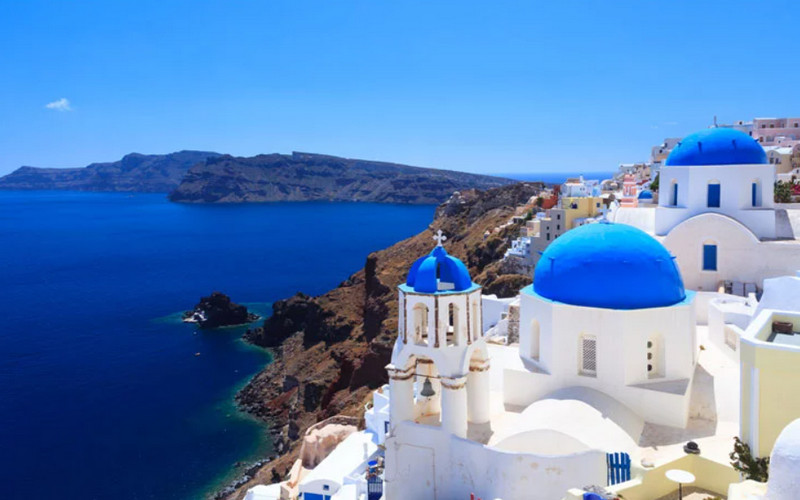
How to Find the Famous Viewpoint
To locate the iconic domes:
-
Start from Oia’s main pedestrian street (Nikolaou Nomikou).
-
Look for the Kastro Oia Houses or the Atlantis Bookstore.
-
Near the bookstore, take a narrow side street that leads toward the caldera.
-
Walk down the steps toward the Blue Domes Viewpoint—you’ll pass charming private terraces, so be respectful.
You’ll soon come across the classic angle you’ve seen on postcards and Instagram, where the two blue domes, a white bell tower, and the caldera align perfectly.
Tips for Visiting
-
Best time to go: Early morning (before 9 AM) for soft lighting and fewer crowds, or late afternoon for golden hour tones.
-
What to bring: Camera, water, and patience—photographers often queue for the perfect shot.
-
Be respectful: Many paths lead through private property. Don’t climb on walls or enter gated areas.
Oia Village: More Than Just Blue Domes
While the blue domes steal the spotlight, Oia offers much more:
-
Oia Castle (Kastro): This old fortress ruins area is one of the best spots to watch the sunset. Get there at least 1–2 hours early during peak season.
-
Ammoudi Bay: A 300-step descent brings you to this serene harbor, where red cliffs meet the Aegean. Dine at seaside tavernas or go cliff-jumping.
-
Maritime Museum: Learn about the island’s seafaring history in this traditional 19th-century captain’s house.
Fira: The Vibrant Capital and Scenic Clifftop Jewel
Fira, Santorini’s capital, is bustling with shops, cafés, and cliffside views. Though it lacks the quaint charm of Oia, it’s vibrant, walkable, and full of striking vistas.
What to See in Fira:
-
The Orthodox Metropolitan Cathedral: An impressive building with beautiful arches and a grand mosaic interior.
-
Catholic Cathedral of Saint John the Baptist: A colorful baroque-style church in the Catholic Quarter.
-
Archaeological Museum of Thera: Offers insights into Santorini’s ancient past.
For a scenic experience, take the clifftop path from Fira to Oia—a 3-hour hike with unforgettable views.
Imerovigli: The “Balcony of the Aegean”
Located between Fira and Oia, Imerovigli is often overlooked, yet it offers some of the island’s best panoramic views and photo ops.
Highlights:
-
Skaros Rock: A dramatic rock formation once home to a fortified medieval settlement. Hike to the top for views of the caldera and Oia in the distance.
-
Agios Georgios Church: A lesser-known blue dome, perched gracefully on the edge of the cliff.
-
Quiet elegance: Imerovigli is perfect for those seeking luxury with privacy.
Pyrgos: Santorini’s Hidden Gem
Pyrgos is the island’s highest village and a cultural treasure trove. Unlike the polished glamour of Oia, Pyrgos retains a traditional Greek feel with winding alleys, blooming bougainvillea, and sleepy cats lounging in the sun.
Don’t Miss:
-
Pyrgos Castle (Kasteli): Climb to the top for 360° views of the island, especially enchanting at sunset.
-
Church of Theotokaki: One of the oldest churches on Santorini, dating back to the 10th century.
-
Local cafés and art galleries: Sample Greek coffee and explore handmade crafts.
Ancient Akrotiri: Santorini’s Lost City
If you’re interested in history, a visit to Akrotiri is a must. This ancient Minoan city, buried by a volcanic eruption around 1600 BCE, is often called the “Pompeii of the Aegean.”
What to Expect:
-
Well-preserved frescoes, multi-story houses, and a remarkably advanced urban layout.
-
A covered archaeological site that’s easy to walk through.
-
A glimpse into what life was like before the catastrophic eruption that shaped the island we see today.
Nearby, visit Red Beach, known for its dramatic crimson cliffs and surreal volcanic landscape.
Profitis Ilias Monastery: Santorini’s Highest Point
Sitting at 567 meters above sea level, Profitis Ilias Monastery offers panoramic views of the entire island. Founded in the 18th century, this Greek Orthodox monastery is not only a spiritual site but also a great viewpoint.
How to Visit:
-
You can drive or hike from Pyrgos.
-
Modest attire is recommended—this is an active religious site.
-
Don’t miss the monastery’s small gift shop, which sells local wine, honey, and handmade candles.
Black Sand Beaches: A Different Kind of Icon
While Santorini isn’t known for classic sandy beaches, it has some of the most unique volcanic beaches in Greece.
Best Beaches to Visit:
-
Perissa and Perivolos: Long stretches of black sand, lined with beach clubs, tavernas, and watersport facilities.
-
Kamari Beach: Family-friendly and walkable, with a lively promenade.
-
Vlychada Beach: Moon-like cliffs and a quieter atmosphere, perfect for photographers.
Oia Sunset: The World-Famous Light Show
No article about Santorini’s landmarks would be complete without mentioning the sunset in Oia. As the sun sinks below the Aegean, the sky explodes in hues of orange, pink, and purple, casting a magical glow over the village.
Where to Watch:
-
Oia Castle (Kastro): Most popular, but extremely crowded.
-
Private terrace: Many hotels offer sunset views from the comfort of your room or pool.
-
Domaine Sigalas winery: Enjoy wine and a view away from the crowds.
Bonus: Off-the-Beaten-Path Landmarks
For travelers looking to avoid the crowds, here are a few lesser-known gems:
-
Emporio Village: A maze of medieval alleyways, bell towers, and local life.
-
Megalochori: Authentic charm, traditional wineries, and calm courtyards.
-
Heart of Santorini: A naturally formed heart-shaped hole in the cliffs near Megalochori—perfect for romantic photos.
Tips for Visiting Santorini’s Landmarks
-
Visit early or late: Beat the heat and the crowds by exploring landmarks in the morning or late afternoon.
-
Rent a car or ATV: Public transport can be slow; a rental gives you flexibility.
-
Book in advance: Especially for sunset dining or photo shoots.
-
Dress appropriately: Bring comfortable shoes for walking the cobblestones and modest attire for churches.
-
Respect private property: Many photo spots are on rooftops or terraces—be mindful of residents and signage.
Experiencing the Real Santorini
While photos of Santorini’s blue domes have made the island famous, it’s the overall experience—the caldera’s grandeur, the serenity of quiet villages, the stories told by ancient stones—that will stay with you long after your trip ends.
Whether you’re chasing the perfect shot or simply wandering sun-drenched paths, Santorini is a place where every corner tells a story. From iconic churches to hidden beaches and mountaintop monasteries, the island’s landmarks offer something for every kind of traveler.
